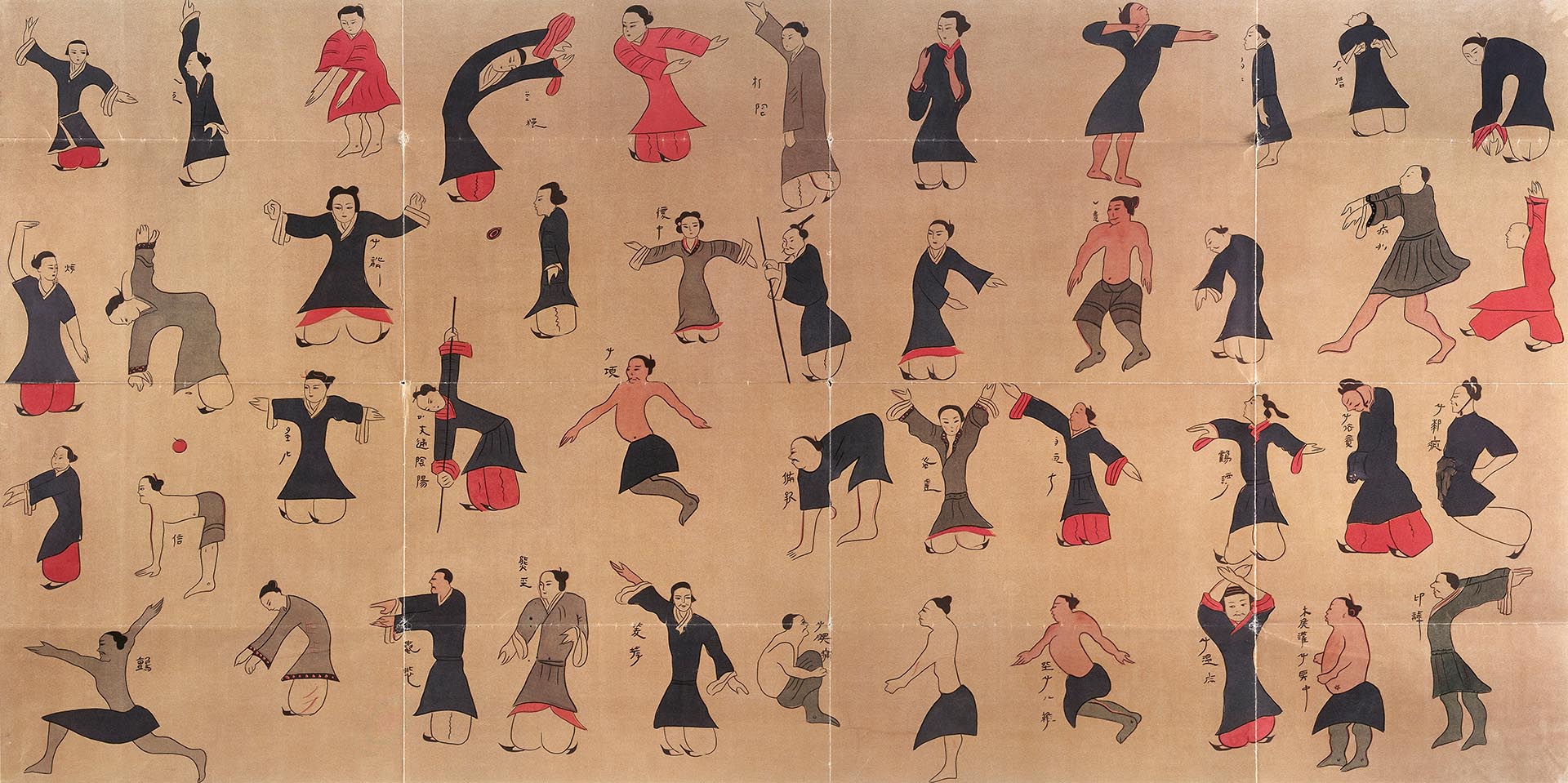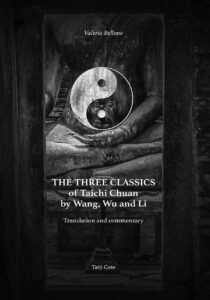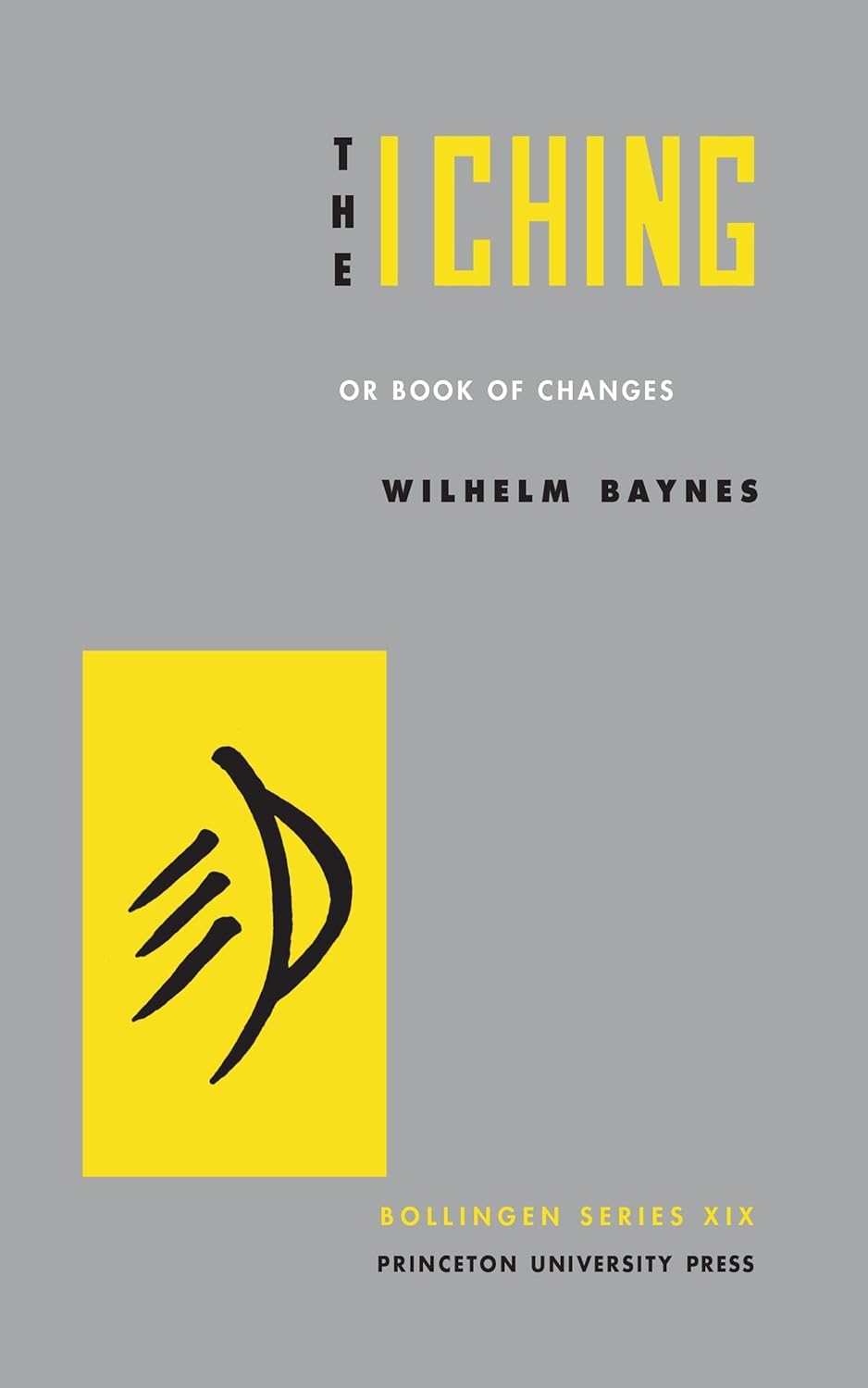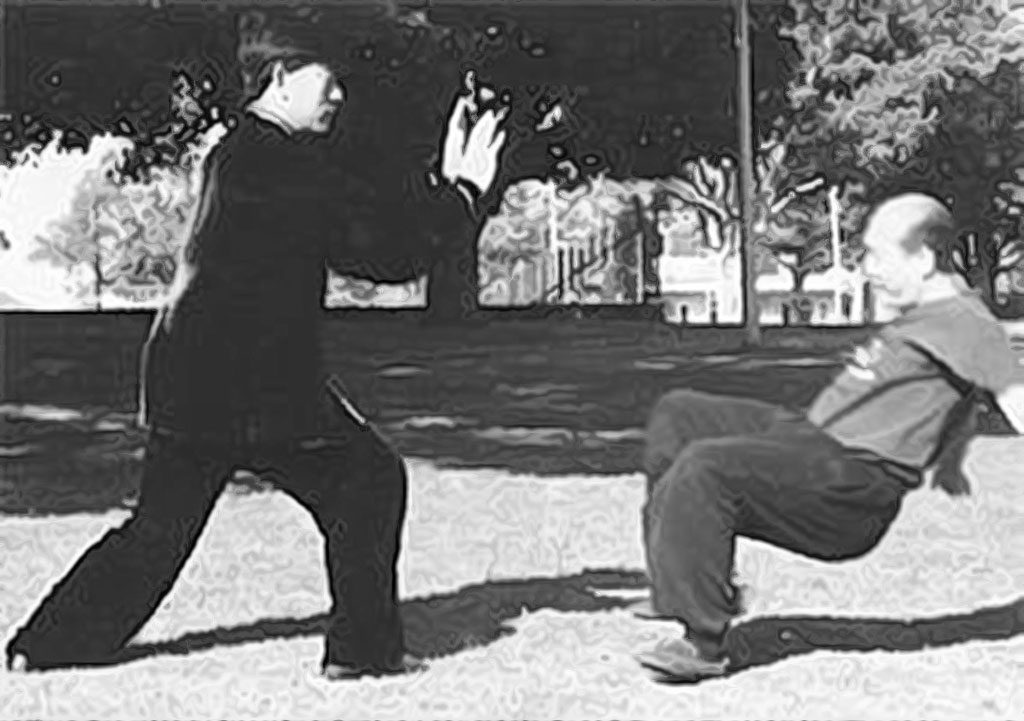
It often happens that new students of a Taichi Chuan (also spelled Taijiquan) course ask for advice regarding the reading of texts that can be of help in the theoretical, practical and philosophical understanding of the ancient martial art of Taichi, today used by most as a system for the development and maintenance of psychophysical well-being and longevity.
A great many books have been written in this regard over time, from the earliest Ancient Chinese Classics, indispensable for a truly deep and advanced understanding of the subject Taijiquan, to the modern instruction manuals created for beginners, intermediates and advanced.
The following is a list, divided into two “levels”, of useful (and valid) books for understanding and learning the basics of Taijiquan, written by past and present Masters who have made major contributions, in the evolution and dissemination of this subject, through their own research and expertise. There are hundreds of publications in different languages regarding Taichi, of these the valid and useful books are no more than twenty. And of these twenty only a few have been translated into Italian.
The following list includes only those texts translated or written in English.
Please note that the following list is not the result of any kind of affiliation with Amazon. We do not receive payment from Amazon for the books reviewed.
The best Tai Chi Chuan book/manual for beginners, intermediate and advanced.
 The three Classics of Taichi Chuan by Wang, Wu e Li, by Wang, Wu and Li
The three Classics of Taichi Chuan by Wang, Wu e Li, by Wang, Wu and Li
The first and still the best book/manual ever written on the art of Tai Chi. A comprehensive text, now available in English translation.
Translated and commented on in the book are the three most important historical Classics of Taijiquan, those of Wang Zongyue, Wu Yuxiang, and Li Yiyu. Every aspect of the art is addressed in this essay: practical, theoretical, historical, cultural, philosophical and linguistic. A text in which no aspect is left out.
The book lends itself to multiple re-readings as one progresses in the practice of Taichi, regardless of whether one is doing it for martial purposes or related to personal well-being. In fact, this book is a distillation of all Taichi knowledge. Everything really useful for the Taichi practitioner, from beginner to advanced, is contained in this manual.
The best Tai Chi Chuan book/manual for beginners, intermediate and advanced.

The three Classics of Taichi Chuan by Wang, Wu e Li, by Wang, Wu and Li
The best book/manual ever written concerning the art of Taichi, a comprehensive text translated into English.
Translated and commented on in the book are the three most important historical Classics of Taijiquan, those of Wang Zongyue, Wu Yuxiang, and Li Yiyu. Every aspect of the art is addressed in this essay: practical, theoretical, historical, cultural, philosophical and linguistic. A text in which no aspect is left out.
The book lends itself to multiple re-readings as one progresses in the practice of Taichi, regardless of whether one is doing it for martial purposes or related to personal well-being. In fact, this book is a distillation of all Taichi knowledge. Everything really useful for the Taichi practitioner, from beginner to advanced, is contained in this manual.
Other texts on Taichi that deal with peculiar themes or are specific manuals
inherent in the different styles of the art, such as Yang, Chen, Wu, and so on.
 The Essence and Applications of Taijiquan, by Yang Chengfu
The Essence and Applications of Taijiquan, by Yang Chengfu
This is an English translation of the original publication of Yang Chengfu’s 1934 book. It is a milestone in the modern evolution of the art of Yang style Taijiquan.
Using what is best-termed demonstration narrative, the author presents form postures and suggested applications from his own perspective, as he performed them.
A Study of Taijiquan, by Sun Lutang
Sun Lutang was a celebrated Chinese martial arts master, and he had the gift of excelling in as many as three of them, all belonging to the internal styles: the Xing Yi Quan, Taiji Quan and Baguazhang, from the synthesis of which he created his own style, the Sun style. He was also the first Chinese master to publish texts on internal styles during the golden age of Chinese martial arts in the late 19th and early 20th centuries. Many basic concepts of Taiji Quan popular today have direct provenance from this very work, which is, moreover, the first modern-era text ever published on the art of Taiji Quan.
Wu Style Taichichuan, by Wu Ying-hua and Ma Yueh-liang
Written by the daughter of the founder of the Wu style and her husband – also a student of the founder – this manual includes a comprehensive list with detailed descriptions for all of the postures, along with their traditional names and variations.
Also included is a good overview of the origin of Wu style, comments on the principles of Wu style and Tai Chi in general, mental and bodily preparation and a detailed and useful review of postures.
Wu Style Taijiquan, by Wang Peisheng
This book is one of the best modern books on Wu style Taijiquan. The book is written in minute detail and is illustrated with very detailed drawn pictures that are easier for understanding the art than photographs.
Cheng Tzu’s Thirteen Treatises on T’ai Chi Ch’uan, by Cheng Man-ch’ing
Cheng Man Ching was a painter, poet, calligrapher, and physician, as well as being globally recognized as one of the figures associated with the history of modern Taijiquan, best known in the West. In his essay, he introduces Taijiquan in a “simple” way to any person who wants to approach the practice, summarizing the anatomical, energetic, philosophical, healing, and martial parts in an understandable way for anyone without major knowledge.
Tai Chi Chuan Classical Yang Style, by Dr. Jwing-Ming Yang
This book is a guide to correctly learning the basics of Yang style Tai Chi Chuan, according to the vision of Dr. Jwing-Ming Yang. It offers a general plan for practice by presenting sufficient content for proper learning of various aspects of the art.
Chen Style Taijiquan: The Source of Taiji Boxing, by Davidine Siaw-Voon Sim and David Gaffney
A recommended reading for Chen-style practitioners. The book describes: the Silk-Reeling Exercise, Laojia Yi Lu, Laojia Paocui, Fajin, Qinna, Push Hands, and the weapons are all featured. Legendary exploits of the Chen family are included to inspire today’s practitioners of this style.
The Complete Book of Tai Chi Chuan, by Wong Kiev Kit
Comprehensive and organic guide offering the beginner practitioners an overview of the various styles of Taichi Chuan and the underlying Chinese philosophical thought.
T’ai Chi Classics, by Waysun Liao
Although the title of the book is misleading since this is not a treatise on the Classics of Taichi, the manual proves suitable as a generalist guide for beginners.
Drawing on his experience, Master Liao explains several useful concepts for understanding Taichi through his method and briefly reviews some passages from the Classical texts of Taijiquan. Waysun Liao makes everything very understandable through his explanations and interpretations.
T’Ai Chi Ch’Uan and Meditation, by Da Lu
In the West, Taichi Chuan is best known as a martial art, although it is conceived as a discipline to be combined with meditation to achieve both harmony with nature and health and longevity. This book is an introduction to the practices of Taijiquan and meditation and is helpful in understanding how it is necessary to place these subjects in the cultural context in which they originated.
Brain Aerobics of Tai Chi Chuan, by William C. C. Chen
Millions of people throughout the world have been living long, productive lives from the daily practice of Tai Chi Chuan. The Brain Aerobics of Tai Chi Chuan is a great contribution to our well-being, making the brain strong and healthy. In this book it is explained by William C. Chen (a student of Cheng Man Ching) how and why in a thorough, detailed and understandable manner.
Other texts on Taichi that deal with peculiar themes or are specific manuals
inherent in the different styles of the art, such as Yang, Chen, Wu, and so on.
The Essence and Applications of Taijiquan, by Yang Chengfu
This is an English translation of the original publication of Yang Chengfu’s 1934 book. It is a milestone in the modern evolution of the art of Yang style Taijiquan.
Using what is best-termed demonstration narrative, the author presents form postures and suggested applications from his own perspective, as he performed them.
A Study of Taijiquan, by Sun Lutang
Sun Lutang was a celebrated Chinese martial arts master, and he had the gift of excelling in as many as three of them, all belonging to the internal styles: the Xing Yi Quan, Taiji Quan and Baguazhang, from the synthesis of which he created his own style, the Sun style. He was also the first Chinese master to publish texts on internal styles during the golden age of Chinese martial arts in the late 19th and early 20th centuries. Many basic concepts of Taiji Quan popular today have direct provenance from this very work, which is, moreover, the first modern-era text ever published on the art of Taiji Quan.
Wu Style Taichichuan, by Wu Ying-hua and Ma Yueh-liang
Written by the daughter of the founder of the Wu style and her husband – also a student of the founder – this manual includes a comprehensive list with detailed descriptions for all of the postures, along with their traditional names and variations.
Also included is a good overview of the origin of Wu style, comments on the principles of Wu style and Tai Chi in general, mental and bodily preparation and a detailed and useful review of postures.
Wu Style Taijiquan, by Wang Peisheng
This book is one of the best modern books on Wu style Taijiquan. The book is written in minute detail and is illustrated with very detailed drawn pictures that are easier for understanding the art than photographs.
Cheng Tzu’s Thirteen Treatises on T’ai Chi Ch’uan, by Cheng Man-ch’ing
Cheng Man Ching was a painter, poet, calligrapher, and physician, as well as being globally recognized as one of the figures associated with the history of modern Taijiquan, best known in the West. In his essay, he introduces Taijiquan in a “simple” way to any person who wants to approach the practice, summarizing the anatomical, energetic, philosophical, healing, and martial parts in an understandable way for anyone without major knowledge.
Tai Chi Chuan Classical Yang Style, by Dr. Jwing-Ming Yang
This book is a guide to correctly learning the basics of Yang style Tai Chi Chuan, according to the vision of Dr. Jwing-Ming Yang. It offers a general plan for practice by presenting sufficient content for proper learning of various aspects of the art.
Chen Style Taijiquan: The Source of Taiji Boxing, by Davidine Siaw-Voon Sim and David Gaffney
A recommended reading for Chen-style practitioners. The book describes: the Silk-Reeling Exercise, Laojia Yi Lu, Laojia Paocui, Fajin, Qinna, Push Hands, and the weapons are all featured. Legendary exploits of the Chen family are included to inspire today’s practitioners of this style.
The Complete Book of Tai Chi Chuan, by Wong Kiev Kit
Comprehensive and organic guide offering the beginner practitioners an overview of the various styles of Taichi Chuan and the underlying Chinese philosophical thought.
T’ai Chi Classics, by Waysun Liao
Although the title of the book is misleading since this is not a treatise on the Classics of Taichi, the manual proves suitable as a generalist guide for beginners.
Drawing on his experience, Master Liao explains several useful concepts for understanding Taichi through his method and briefly reviews some passages from the Classical texts of Taijiquan. Waysun Liao makes everything very understandable through his explanations and interpretations.
T’Ai Chi Ch’Uan and Meditation, by Da Lu
In the West, Taichi Chuan is best known as a martial art, although it is conceived as a discipline to be combined with meditation to achieve both harmony with nature and health and longevity. This book is an introduction to the practices of Taijiquan and meditation and is helpful in understanding how it is necessary to place these subjects in the cultural context in which they originated.
Brain Aerobics of Tai Chi Chuan, by William C. C. Chen
Millions of people throughout the world have been living long, productive lives from the daily practice of Tai Chi Chuan. The Brain Aerobics of Tai Chi Chuan is a great contribution to our well-being, making the brain strong and healthy. In this book it is explained by William C. Chen (a student of Cheng Man Ching) how and why in a thorough, detailed and understandable manner.
Fundamental books for understanding the Chinese thought behind Taijiquan
 Taiji is a Daoist principle that is thus rooted in a millennia-old philosophy, while Taijiquan is the martial art that makes use of the Taiji principle. To understand the relationship between philosophy and practices, it is essential to read and study some pivotal texts, such as:
Taiji is a Daoist principle that is thus rooted in a millennia-old philosophy, while Taijiquan is the martial art that makes use of the Taiji principle. To understand the relationship between philosophy and practices, it is essential to read and study some pivotal texts, such as:
The I Ching, or, Book of Changes, by R. Wilhelm
Tao Te Ching, by Stephen Addiss, Stanley Lombardo and Burton Watson
Zhuangzi: The Complete Writings, by Zhuangzi
Lieh-tzu: A Taoist Guide to Practical Living, by Eva Wong
Fundamental books for understanding the Chinese thought behind Taijiquan
Taiji is a Daoist principle that is thus rooted in a millennia-old philosophy, while Taijiquan is the martial art that makes use of the Taiji principle. To understand the relationship between philosophy and practices, it is essential to read and study some pivotal texts, such as:
The I Ching, or, Book of Changes, by R. Wilhelm
Tao Te Ching, by Stephen Addiss, Stanley Lombardo and Burton Watson
Zhuangzi: The Complete Writings, by Zhuangzi
Lieh-tzu: A Taoist Guide to Practical Living, by Eva Wong





